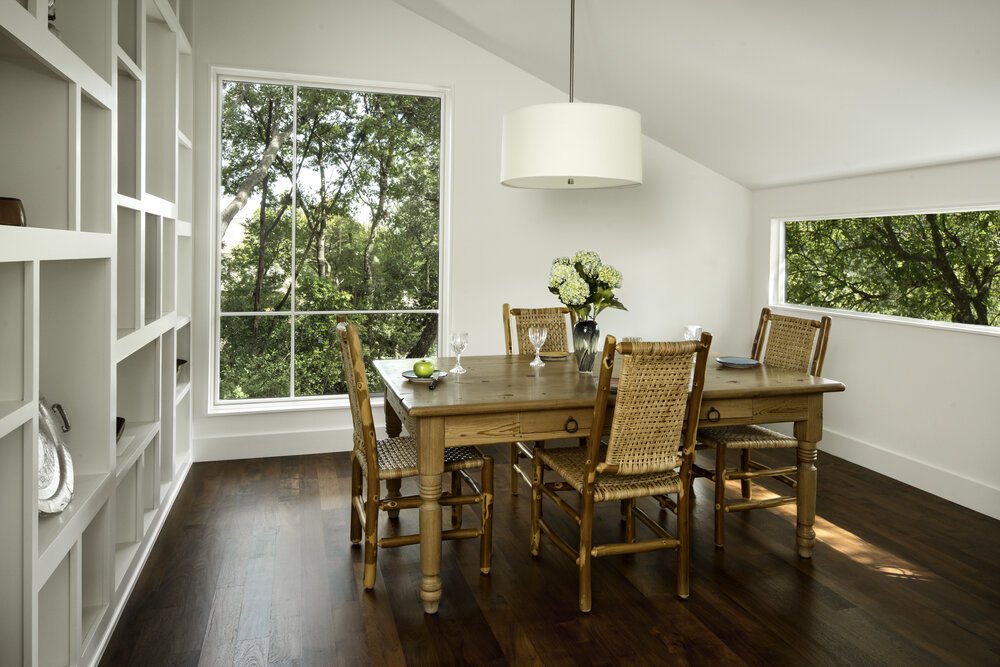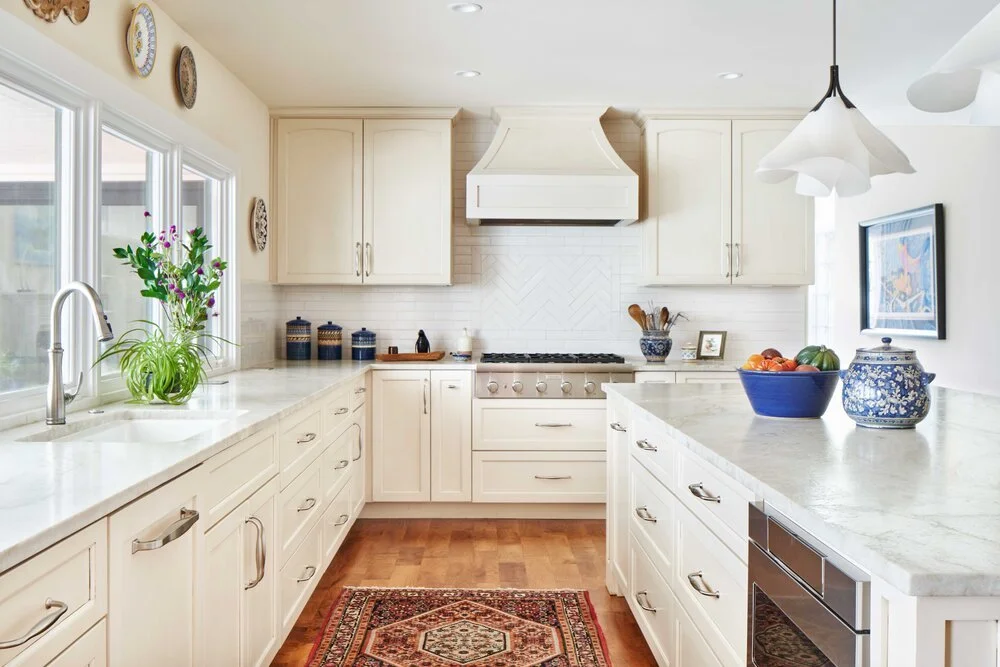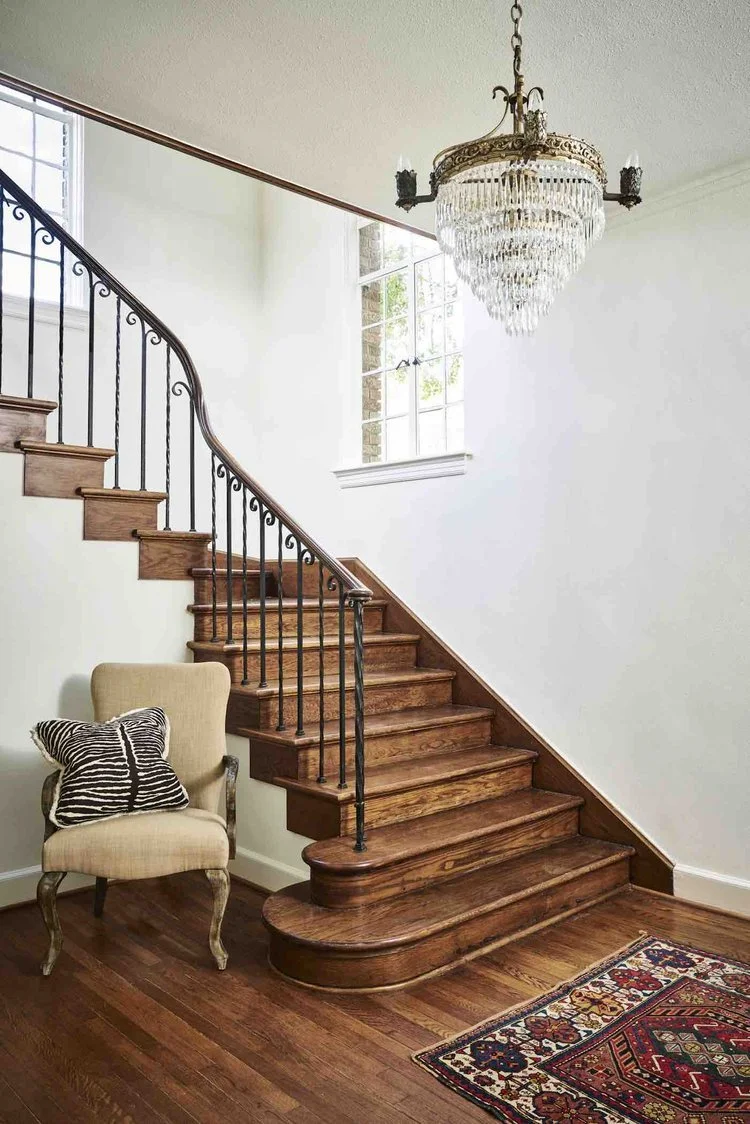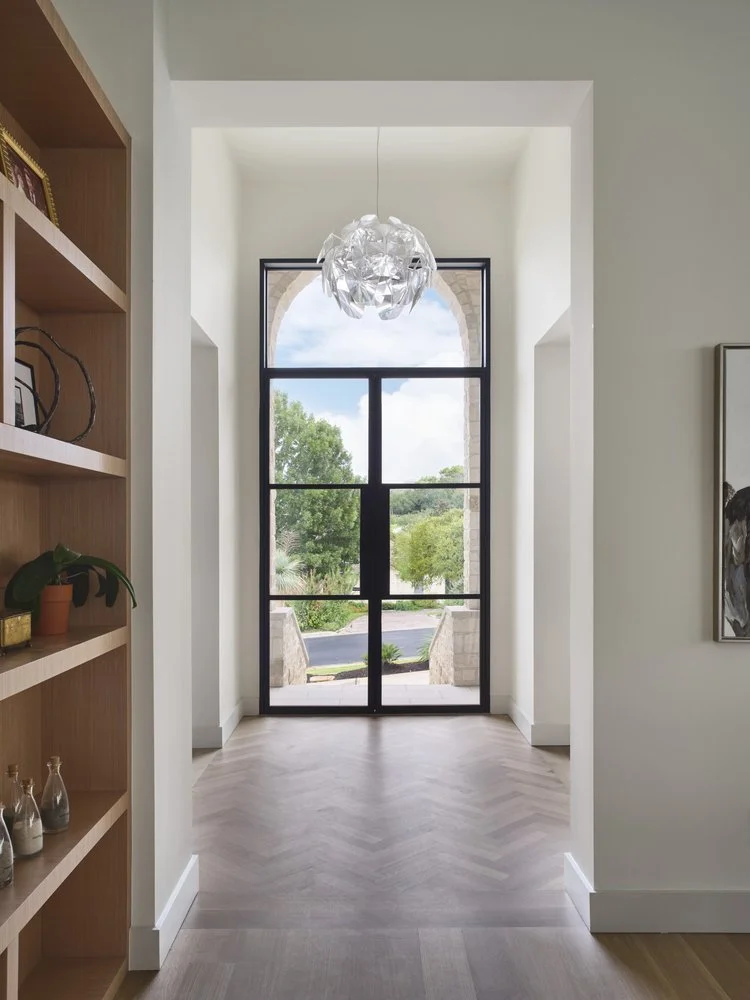The Architect’s Wood Floor Guide
Our Austin Architects Review the Different Types of Wood Flooring and Tips to Choose the Best Option for Your Home
Wood flooring is a solid choice for any home, whether traditional, contemporary, or something in between. However, picking the right type of wood flooring, stain color, and even pattern lay can be challenging. To make the selection process easier, our Austin architects share everything you need to know in our wood floor guide. We cover the different types of wood floors, stain options, pattern lays, and other tips so you can make the right choice.
Wood Floor Guide: Everything You Need to Know
Our wood floor guide covers everything from wood species to stains. While it’s a great overview to help narrow down selections, it’s important to remember that every home is unique. You’ll need to balance style, function, maintenance, and budget. To help you get it right, we recommend working with an experienced architect or interior designer who can guide you through the process from start to finish.
Types of Wood Flooring
Wood flooring can be broken down into two main categories: solid and engineered.
Solid Hardwood
As the name implies, solid hardwood floors are milled from cut trees. Plank thickness typically ranges from 5/16 to 3/4 inches, and widths vary from 2 to 5 inches. Because planks are solid wood, they can be stained and refinished multiple times, depending on their thickness. Solid hardwoods are extremely durable, so they’re well suited to high-traffic areas in the home. However, they are susceptible to humidity and moisture level changes. So, they’re not recommended for basement installations.
Engineered Hardwood
Engineered hardwood floors are made with a base of several thin layers of wood fused together with heat, glue, and pressure with a wood veneer applied to the top. The engineered base layer increases the product's durability and resistance to warping, expansion, or contraction due to moisture changes. The wood veneer layer on top can be refinished once, sometimes twice, depending on the thickness. Other benefits include a lower cost compared to solid hardwoods, easy installation, and options to choose from prefinished stains.
The Architect’s Advice: Laminate is Not Wood
Laminate is not to be confused with engineered hardwood. While the two materials each have a durable manufactured base layer, engineered hardwood has a real wood veneer on top. In contrast, laminate has a photo image sealed with a waterproof coating. While it may look nice in photos, faux wood laminate is easily spotted in person, especially when there are real wood features in other areas of the home. Our architects do not recommend it, especially for high-end residential projects.
Finished vs. Unfinished Hardwood Floors
Another consideration to keep in mind is if you prefer finished or unfinished hardwood floors.
Finished Hardwood
Finished hardwood comes stained, sealed, and ready to install. Prefinished wood floors can help speed up the installation process. However, it prevents you from going custom with your stain choice. Engineered hardwood typically comes prefinished, but unfinished varieties are also available.
Unfinished Hardwood
Unfinished hardwood is also known as site-finished. The planks arrive without a stain or seal applied, just the raw wood. Once laid, they will require a finishing stain and seal on site. The benefit of unfinished floors is that they allow for any custom stain imaginable and give you the ability to change your mind if you don’t like your first stain color selection. Many homeowners also prefer the traditional installation process.
Hardwood Floor Species
Different wood species have different looks, each taking on stains differently to reveal unique color hues and graining. For example, pine hardwoods have a heavily textured grain and knotty look that fits a rustic style. White oak has a lighter, natural look, while cherry takes on a darker, red hue. Flooring options like bamboo also offer the benefit of sustainability. Ultimately, your hardwood floor species selection will come down to your preferred look, budget, and availability.
Domestic Hardwoods
Oak
Hickory
Ash
Maple
Walnut
Birch
Pine
Exotic Hardwoods
Cherry
Mahogany
Tigerwood
Teak
Bamboo
Choosing a Wood Floor Stain
Endless wood stain color options are available for you to choose from, ranging from light natural finishes to rich dark stains. You can also select a stain to give your wood floors the appearance of another, more expensive wood. Sometimes, homeowners even choose to graywash or paint their wood floors. However, this option is best reserved for beachy and eclectic interiors.
If you are going with a prefinished wood floor, you will have to choose from a palette of colors by the manufacturer. Test samples in the space to see how they look with other material choices. If you select an unfinished floor, you have the freedom to pick any stain color you wish. Test samples on the floor once installed to see how they look in the space and take to the wood. Remember to compare wood floor stains to other wood elements in the home, like wall paneling, to make sure they coordinate.
Wood Floor Lay Patterns
You will also have to select your wood floor lay pattern. Here are some popular choices.
Straight
A straight wood floor lay is the most common and simplest. In this lay, boards are arranged next to each other, running the room's length.
Herringbone
A herringbone lay is a zigzag pattern, where each plank is set at a 45-degree angle and met at staggering ends. This pattern offers more visual interest but also takes more time and effort.
Chevron
A chevron pattern is similar to a herringbone zigzag. However, planks are arranged in a more symmetrical V pattern.
Versailles
Named after the Palace of Versailles, this pattern is one of the most complex and detailed. The Versailles lay consists of a pattern of squares with smaller squares inside, differentiated by intricate cuts or contrasting wood grain directions.
Ready to Lay Your Wood Floors?
We hope this guide brought insight and inspiration to your wood flooring selections. If you’re still unsure which options are right for your home, don’t worry. Our team of Austin architects is here to help guide you through any of your wood floor questions.
Have Questions About Tile?
Do You Need Help Designing Your Home?




